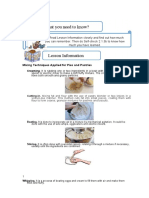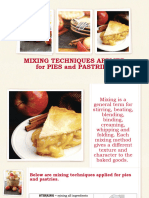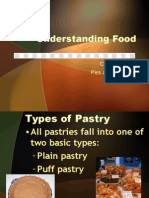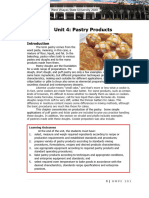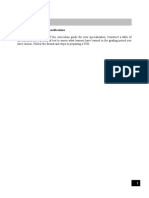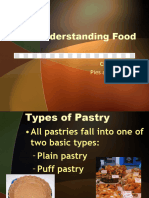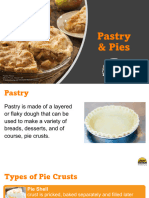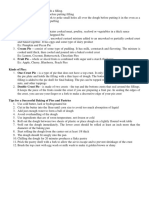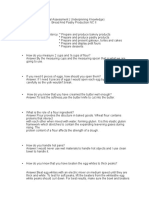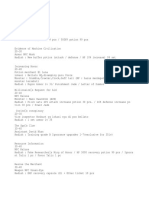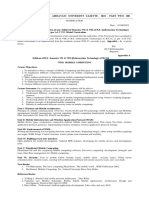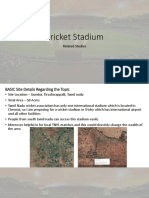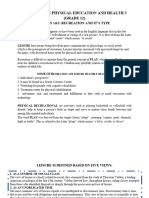11
Bread and
Pastry
Production
Quarter 2 – Module 3:
Prepare Pastry roducts
P
1
� Lesson 1 Prepare pastry products
Pastries are baked products made of crust and usually with filling inside or
Bake pastry products according to techniques and appropriate conditions; and
enterprise requirement and standards. Pastry derived from the word paste and pastry
crust is a pie shell which is a product made of flour, fat, liquid and salt. Basically, pie and tart
are made from crust, filling and toppings. However in order to have a delightful baked pies
and pastries depends on the proper techniques of incorporating fat and flour and ensuring
less gluten formation
TEMPERATURE AND TECHNIQUES
Chill all utensils and ingredients before using. This ensures that the temperature of the
dough is kept cool.
Pie dough should be cool during mixing and make up for easier handling.
Cut and chilled butter into medium cubes and rub it against the flour very rapidly to
ensure that the butter does not melt.
Hand mixing is suited to small quantities of dough because you have control over the
mixing process.
The pastry dough should chill at least 30 minutes to relax the gluten in order to avoid
shrinkage when baked.
Pie with high moisture fillings could keep crust crispier by adding 1 tbsp. of vinegar to
the formula per crust, thus making it suitable for custard pies.
If you are going to use a crust for cream pie filling, make sure to use pâte sablée. After
blind baking the crust, brush with melted white chocolate so that the moisture will not
seep through the crust.
Roll out the between sheets of plastic to prevent the dough from sticking and ensuring
a smoother texture.
When baking, put pie into pre-heated baking sheet or baking stone inside the oven to
acquire the heat quickly.
To achieve desirable product, the first minutes of pie in the oven must have higher
temperature, then lower down after 15 minutes until thoroughly bake.
GUIDELINES TO CONSIDER IN PASTRY MAKING
1. Keep the ingredients in the condition instructed in the recipe. Some dough required
chilled shortening in iced water, some required warm in melted butter and lukewarm
water.
2. The addition of liquids is the most critical step in making pie crust. Sprinkle cold water a
little at a time over the flour-shortening mixture. Too much liquid will make the dough
sticky and gluten will easily develop.
3. Avoid using too much flour on the table. It will harden the dough. A rolling cover is best
as it maximizes the use of flour.
4. Chill the dough before rolling relaxes gluten to make the dough elastic, softer and
easier to work with.
5. Preparation of the crust requires minimal handling, while that of strudel crust requires
extensive kneading and stretching.
2
� 6. To prevent a soggy bottom crust, as in egg pie, first prick the crust all over, brush crust
with one egg lightly beaten with one teaspoon cold water. Chill for 30 minutes then
bake at 450F for five (5) minutes. Let cool then pour the filling and bake according to
recipe procedure.
7. For baked pie crust to be filled follow step (No. 6) and chilled crust longer before
baking. Cool before adding the filling.
8. Never pour hot filling into a hot or cold pie crust. Both must be cool first.
9. For double pie crust. Slit the top crust to allow steam to escape.
10.Finish edges of double pie crust and turn over. Edges does not only make the pie look
neat and attractive, but it also seals together the top and bottom of crust. This
prevents the filling from oozing out.
Pastry Defects and their Causes
1. Tough Pastry – used of too much water, insufficient shortening, insufficient cutting off
fat into the flour, over mixing used of too much flour in rolling and too long standing
before baking.
2. Crumbly and Mealy Pastry – used of oil or soft melted fat; used of too much fat,
under mixing and used of too little water.
3. Deformed Shrunken Crust – wrong proportion of ingredients, over handling of pastry
as it was being fitted into the pan, stretching of dough in pan, used of old dough,
uneven thickness when rolled and too low oven temperature.
4. Blisters on Crust – pastry fitted too tightly in pan, inadequate pricking and too low
oven temperature.
5. Pale Crust – undertaking; over mixing; used of too little fat; used of too much water;
used of too much flour on board and too low oven temperature.
6. Soogy Lower Crust – over handling of pastry; used of too much filling; too much
moisture in filling; pie placed in too high and too low oven temperature.
7. Poor Flavor – used of wrong ingredients and poor quality ingredients.
Scaling instructions for Baked Pies
PIE SIZE WEIGHT OF PIE SIZE WEIGHT OF
FILLING FILLING
8 in. 26-30 oz 20 cm 750-850 g
9 in. 32-40 oz 23 cm 900-1150 g
Baking Temperatures for Pies and Pastries
Not all ovens are of the same kind and type. Check on the quality of oven to be used to
ensure its capacity to produce quality pastry products. Heat should be evenly distributed
throughout the compartment. Use the table below as your temperature guide in baking pies
and pastries.
Types of Product Oven Temperature Baking Time
Pastry
One – crust pie (custard 400°F to 425°F 30 to 40 min
type, unbaked shell)
Meringue on cooked filling 350°F to 425°F 12 to 15 min
in prebaked shell
Shell only 450°F 10 to 12 min
3
�Two – crust pies with 400°F to 425°F 45 to 55 min
uncooked filling
Two – crust pies with 425°F to 450°F 30 to 45 min
cooked filling
What I Have Learned
Knowledge about temperature and techniques in making pies and pastries.
Scaling instructions for Baked Pies
Guidelines and techniques to be considered in pastry making.
Baking Temperatures for Pies and Pastries.
Job well done! Now we are ready to check our skills by doing the performance task,
ready your PPEs and ingredients for pastries.
4
� LEARNING ACTIVITY SHEET
BREAD AND PASTRY PRODUCTION
QUARTER 2 WEEK 2
NAME:_______________________ GRADE LEVEL & SEC._______ DATE:_______
II. Learning Competency
After going through this module , you are expected to:
1. understand the important guidelines in pastry making;
2. identify the baking temperatures for pies and pastries;
3. Explain the pastry defects and causes.
II. Directions/ Instructions
Read and understand all the directions of the proceeding activities.
Perform all the task as directed.
Always observe precautionary measures
IV. Exercises/ Activities:
A. Explore
Below are statements on the temperature and techniques applied in preparing pies and
pastries. Choose the correct word/term from the box to make the statement complete. Write
your answer in your activity notebook.
Hand mixing cool pre-heated
Chill 30
1. __________all utensils and ingredients before using. This ensures that the temperature of
the dough is kept cool.
2. Pie dough should be _______ during mixing and make up for easier handling.
3. __________________ is suited to small quantities of dough because you have control over
the mixing process.
4. The pastry dough should chill at least ______ minutes to relax the gluten in order to
avoid shrinkage when baked.
5. When baking, put pie into __________________ baking sheet or baking stone inside the
oven to acquire the heat quickly.
B. Learn
Give the oven temperature for baking the different types of Pastry Products.
Types of Pastry Product Oven Temperature
1. Two-crust pies with uncooked
filling
5
� 2. Meringue on cooked filling in
prebaked shell
3. One-crust pie (custard type,
unbaked shell)
c. Post-Assessment: Read and analyse each statement carefully. Choose the best answer
and write the letter only in your activity sheet.
1. What oven temperature required for One-crust pie (custard type, unbaked shell)?
a. 400°F to 425°F
b. 350°F to 425°F
c. 450°F
d. 425°F to 450°F
2. What oven temperature required for Meringue on cooked filling in prebaked shell?
a. 350°F to 425°F
b. 450°F
c. 400°F to 425°F
d. 425°F to 450°F
3. What oven temperature required for Shell only?
a. 350°F to 425°F
b. 450°F
c. 400°F to 425°F
d. 425°F to 450°F
4. What oven temperature required for Two – crust pies with cooked filling?
a. 350°F to 425°F
b. 450°F
c. 400°F to 425°F
d. 425°F to 450°F
5. What oven temperature required for Two – crust pies with uncooked filling?
a. 350°F to 425°F
b. 450°F
c. 400°F to 425°F
d. 425°F to 450°F
6. What is the baking time for One-crust pie (custard type, unbaked shell)?
a. 45 to 55 min
b. 10 to 12 min
c. 30 to 40 min
d. 12 to 15 min
7. What is the baking time for Meringue on cooked filling in prebaked shell?
a. 45 to 55 min
b. 10 to 12 min
c. 30 to 40 min
d. 12 to 15 min
8. What is the baking time for Shell only?
a. 45 to 55 min
b. 10 to 12 min
6
� c. 30 to 40 min
d. 12 to 15 min
9. What is the baking time for Two – crust pies with uncooked filling?
a. 30 to 45 min
b. 10 to 12 min
c. 45 to 55 min
d. 12 to 15 min
10. What is the baking time for Two – crust pies with cooked filling?
a. 45 to 55 min
b. 10 to 12 min
c. 30 to 45 min
d. 12 to 15 min
11. Which of the following causes Tough Pastry?
a. Used of too much water
b. Used of wrong ingredients and poor quality ingredients
c. Wrong proportion of ingredients
d. Used of oil or soft melted fat
12. Which of the following causes Crumbly and Mealy Pastry?
a. Used of too much water
b. Used of wrong ingredients and poor quality ingredients
c. Wrong proportion of ingredients
d. Used of oil or soft melted fat
13. Which of the following causes Pale Crust?
a. Underbaking
b. Used of wrong ingredients and poor quality ingredients
c. Wrong proportion of ingredients
d. Used of oil or soft melted fat
14. Which of the following causes Deformed Shrunken Crust?
a. Used of too much water
b. Used of wrong ingredients and poor quality ingredients
c. Wrong proportion of ingredients
d. Used of oil or soft melted fat
15. Which of the following causes Poor Flavor?
a. Used of too much water
b. Used of wrong ingredients and poor quality ingredients
c. Wrong proportion of ingredients
d. Used of oil or soft melted fat
Additional Activities
Activity: Define Me
Define each of the following word/term. Write your answer in your Activity Sheet.
1. Gluten –
2. Pâte Sablée –
7
�3. Lukewarm –
4. Strudel crust –
5. Soggy –
6. Oozing out –
Answer Key
b15.
b15. c14.
c14. a13.
a13. d12.
d12. a11.
a11. °F to 425°F 400 3. c10.
c10. °F to 425°F 350 2. c 9.
c 9. °F to 425°F 400 1. b 8.
b 8. Activity 2 d 7.
d 7. What's More c 6.
c 6. c 5.
c 5. heated. pre- 5 d 4.
d 4. 30 . 4 b 3.
b 3. .Hand mixing 3 a 2.
a 2. cool 2. a 1.
a 1. Chill 1. Assessment -Pre
Post Assessment Activity 1: Fill Me In
Assessment What’s New What I Know
